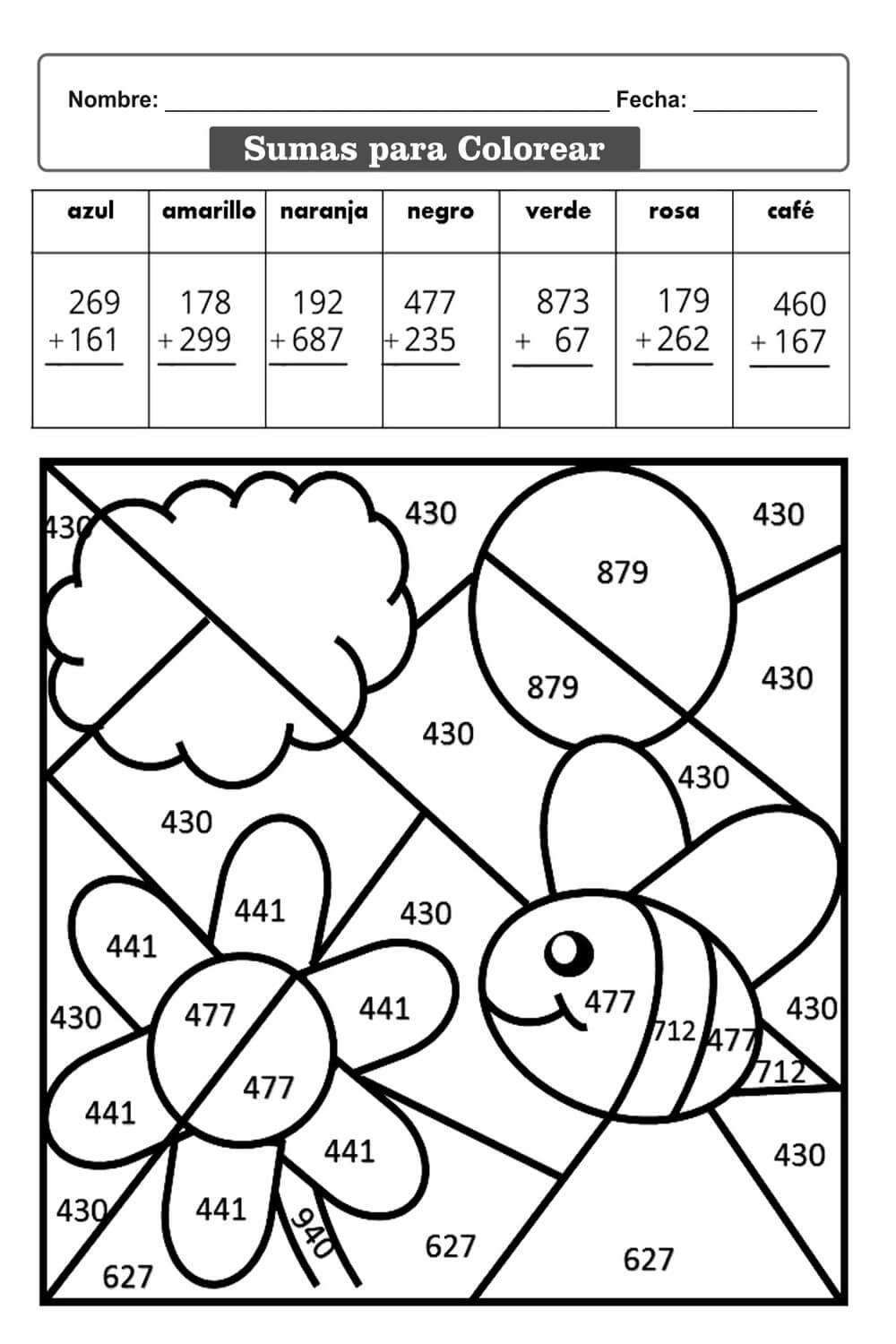Unlocking Number Power: Mastering Four-Digit Addition and Subtraction

Ever wondered how computers crunch numbers or how engineers design complex structures? At the heart of these feats lies a fundamental skill: manipulating numbers. This exploration delves into the fascinating world of four-digit addition and subtraction, a cornerstone of mathematical literacy. We'll uncover its historical significance, practical applications, and powerful benefits, equipping you with the knowledge to conquer any four-digit calculation.
From balancing checkbooks to calculating distances, four-digit arithmetic is woven into the fabric of daily life. It's the gateway to more advanced mathematical concepts, laying the groundwork for algebra, calculus, and beyond. But mastering these operations isn't just about rote memorization; it's about understanding the underlying principles and developing strategies for efficient problem-solving.
The history of four-digit arithmetic is intertwined with the development of number systems themselves. Ancient civilizations used various methods for representing numbers, from Babylonian cuneiform to Roman numerals. The adoption of the Hindu-Arabic numeral system, with its place value system and the concept of zero, revolutionized arithmetic and paved the way for the efficient calculation methods we use today. Performing calculations with four-digit numbers became significantly simpler, enabling advancements in trade, science, and engineering.
The importance of four-digit addition and subtraction cannot be overstated. It's a fundamental skill in education, essential for understanding concepts in science, technology, engineering, and mathematics (STEM) fields. Furthermore, it empowers individuals to make informed decisions in financial matters, analyze data, and solve real-world problems involving quantities, measurements, and budgets. A strong grasp of these operations contributes to critical thinking and analytical skills, fostering a deeper understanding of numerical relationships.
One of the primary challenges in four-digit arithmetic is carrying and borrowing, especially when multiple digits are involved. Students often struggle with keeping track of these operations, leading to errors. However, with practice and effective strategies, such as breaking down problems into smaller steps and using visual aids, these challenges can be overcome. Mastering four-digit operations builds confidence in numerical reasoning and opens doors to more complex mathematical explorations.
Adding 3456 and 1234 involves aligning the digits by place value and adding each column, starting from the ones place. Subtracting 1234 from 3456 similarly involves aligning digits and subtracting each column, borrowing from the next higher place value when necessary.
Benefits of Mastering Four-Digit Arithmetic:
1. Enhanced Problem-Solving Skills: Four-digit arithmetic strengthens logical thinking and problem-solving abilities, enabling you to tackle complex situations involving numerical data.
2. Improved Financial Literacy: Managing finances, creating budgets, and understanding financial statements all require proficiency in four-digit arithmetic.
3. Foundation for Advanced Math: A solid grasp of four-digit operations is crucial for understanding algebra, geometry, calculus, and other advanced mathematical concepts.
Advantages and Disadvantages of Traditional Methods
| Advantages | Disadvantages |
|---|---|
| Builds strong mental math skills | Can be time-consuming for complex calculations |
| Doesn't require external tools | Prone to human error, especially with carrying and borrowing |
FAQ:
1. What is the largest four-digit number? 9999
2. What is the smallest four-digit number? 1000
3. How do you borrow in subtraction? You decrease the digit in the next higher place value by one and add ten to the digit needing borrowing.
4. How do you carry in addition? When the sum of a column is greater than or equal to 10, you carry the tens digit to the next column.
5. What are some common mistakes in four-digit arithmetic? Errors in carrying and borrowing, misaligning digits, and basic addition/subtraction errors.
6. How can I improve my four-digit arithmetic skills? Practice regularly, use visual aids, and break down problems into smaller steps.
7. What resources can help me learn four-digit arithmetic? Math textbooks, online tutorials, and educational apps.
8. Why is place value important in four-digit arithmetic? Place value determines the value of each digit in a number, crucial for proper alignment and calculation.
Tips and Tricks:
Use estimation to check the reasonableness of your answers. Practice mental math strategies like rounding and breaking down numbers. Utilize grid paper to maintain proper alignment of digits.
In conclusion, mastering four-digit addition and subtraction is not just a stepping stone in mathematical education, but a vital life skill. It empowers us to analyze data, manage finances, and solve real-world problems with confidence. By understanding the historical context, practical applications, and potential challenges, we can appreciate the profound impact these fundamental operations have on our lives. Embrace the power of numbers, practice regularly, and unlock your full potential in the world of mathematics and beyond. As you become more proficient with four-digit arithmetic, you’ll find yourself approaching numerical tasks with greater confidence and efficiency, opening up new avenues for learning and exploration. So, keep practicing, explore different problem-solving strategies, and embrace the challenge – the rewards are well worth the effort.
Explore ann arbors waterways your ultimate guide to kayaking
Decoding the new dad joke phenomenon why puns are a parents new best friend
Decoding the toyota rav4 xle premium specs features and future













